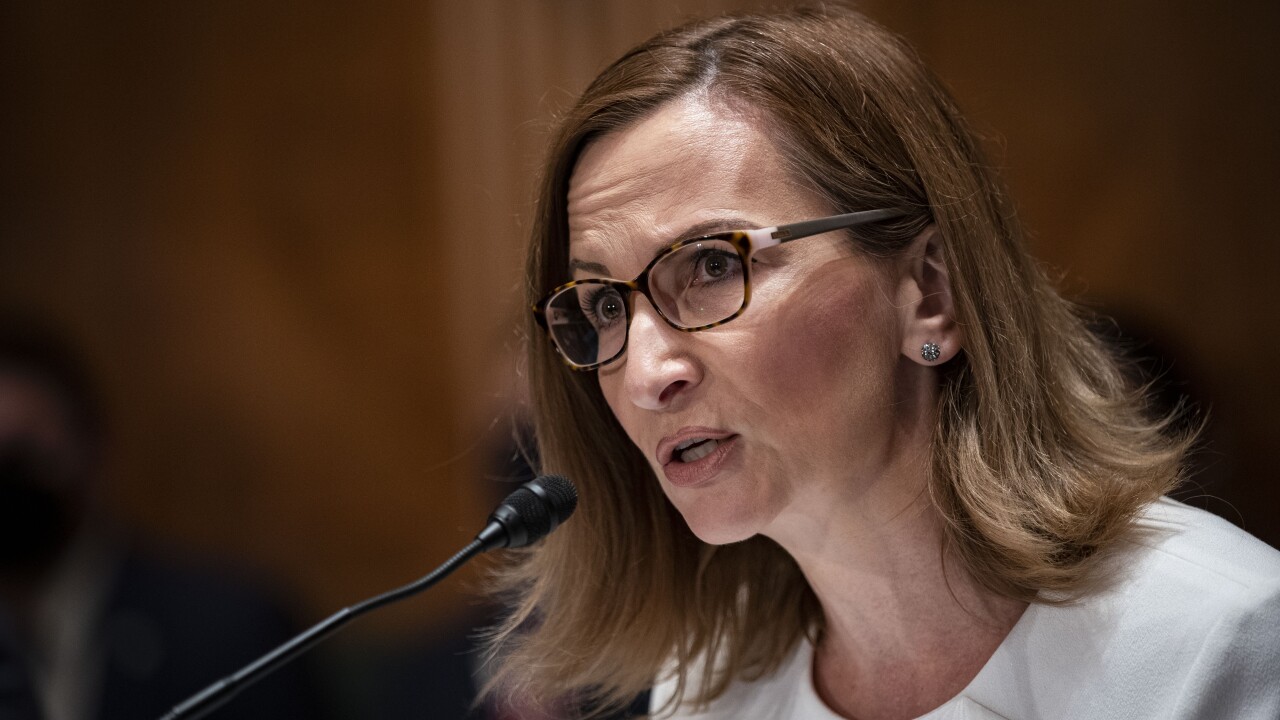-
Federal Reserve Board officials have pledged not to force big banks to meet Basel III standards early, but have simultaneously warned institutions that they cannot pay dividends until they do so.
November 9
WASHINGTON — Banks with more than $50 billion of assets must be "well prepared" to meet new international capital standards when they file capital plans next year, according to a final rule issued by the Federal Reserve Board on Tuesday.
The central bank said it will use the plans to begin a comprehensive capital analysis and review of 31 financial institutions, including a new round of supervisory stress testing for 19 of those institutions.
"Institutions will be expected to have credible plans that show they have sufficient capital so that they can continue to lend to households and businesses, even under adverse conditions, and are well prepared to meet regulatory capital standards agreed to by the Basel Committee on Banking Supervision as they are implemented in the United States," the Fed said in a press release.
Under the rule, the Fed will conduct annual evaluations of firms' capital adequacy, internal capital adequacy assessment processes, and their plans to make capital distributions. The Fed said it will approve dividend increases only for firms whose capital plans have been approved by supervisors, and that are able to demonstrate sufficient financial strength during stressed market scenarios.
The plans are due Jan. 9.
Fed Gov. Daniel Tarullo hinted such a requirement was in the offing in a recent speech, saying that firms would not be allowed to pay dividends unless they could prove they will be able to meet Basel III capital requirements. Technically, banks do not have to comply with Basel III rules until 2019, but regulators have put firms under pressure to meet them much earlier than that.
The Fed also issued instructions outlining the information it is seeking and the analysis it will do under the new stress testing, which will differ based on a company's size and complexity. The testing will apply only to 19 firms that underwent stress testing in 2011.
The instructions include a stress test scenario, created by the Fed, that is designed to simulate what would happen if the country were in a deep recession — including facing an 8% quarterly decline in real gross domestic product — while at the same time economic activity in other countries was also contracting.
Six of the firms will also have to estimate potential losses stemming from a "hypothetical global market shock," similar to the price movements seen during the second half of 2008, according to a press release. Those results will be made public, the Fed said, including specific information about pro forma, post-stress capital ratios, stress loss projections and loss rates for major loan categories; losses in certain securities portfolios; and losses on the trading portfolio and counterparty credit risk positions, net revenue and net income. The Fed named the six banks that must comply with the trading shock test: Bank of America Corp., Citigroup Inc., The Goldman Sachs Group, Inc., JPMorgan Chase & Co., Morgan Stanley, and Wells Fargo & Company.
Karen Shaw Petrou, managing partner of Federal Financial Analytics, said that the Fed's regime for capital distributions is tough.
"It is a very, very stringent regime," she said. "I think the onus is going to be on the affected banks to make their case to the Fed, and the burden of proof is going to be required to make a capital distribution, not for the Fed to block one."
Others agreed the new stress tests were tougher.
"These stress test scenarios are more severe than I have seen in the past, but they are consistent with continued risks in the system, such as the European and sovereign debt crisis and challenges to economic and job growth," said Sabeth Siddique, a director at Deloitte & Touche LLP and a former assistant director of banking supervision and regulation at the Fed. "One should take into account the current environment when judging the severity of these scenarios, but on a nominal basis these adverse scenarios do seem more severe."
Gil Schwartz, a partner at Schwartz and Ballen and a former attorney for the central bank, said the stress tests will serve as an additional way to keep tabs on companies with potentially systemic effects on the economy.
"The significance of these stress tests is that if you are a large bank holding company, you're deemed to be more important to the financial system and as a result you will be subject to special scrutiny by the Fed," Schwartz said. "The stress test from the Fed's perspective is the most effective way of determining what the impact of negative economic conditions will be on an institution's financial performance."
Schwartz added that these stress tests apply only to banking companies, but suggested similar measures may be taken with systemically important nonbank financial companies designated by the new Financial Stability Oversight Council.
"The Fed always had authority to supervise bank holdings companies, but what Dodd-Frank did was to underscore the importance of bank holding companies that had $50 billion or more in assets," he said. "It does not apply to nonbanks, yet. The FSOC has the authority to put certain nonbank institutions under the Fed's jurisdiction, and therefore if you're systemically important and subject to the Fed's supervisory authority you can expect that you will be subject to these types of stress tests as well."
The capital plans have several mandatory elements. They must include an assessment of the expected uses and sources of capital over the planning horizon; a description of all planned capital actions; a discussion of any possible changes to the company's business plan that are likely to have a material impact on capital and liquidity; a detailed description of the company's process for assessing capital adequacy; and the company's capital policy.
In its instructions to banks, the Fed said the plans should also provide a transition plan that includes pro forma capital estimates of the company's regulatory capital ratios under the proposed Basel III framework.
"As stated in the September 2010 Group of Governors and Heads of Supervision agreements," the instructions said, "BHCs that meet the minimum ratio requirement during the Basel III transition period but remain below the 7% Tier 1 common equity target (minimum plus conservation buffer) will be expected to maintain prudent earnings retention policies with a view to meeting the conservation buffer as soon as reasonably possible."
The Fed said any supervisory response to the capital plans will correspond to any problems uncovered by the stress tests. For example, a company with incomplete or insufficient capital planning processes, or with projected ratios that do not appear appropriate given its risk profile, could be required to improve those processes, may be restricted from some or all capital distributions, or may be required to take actions to improve its capital adequacy.





